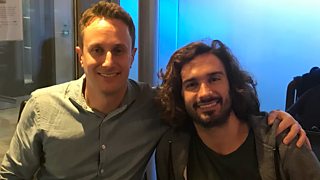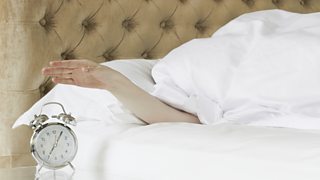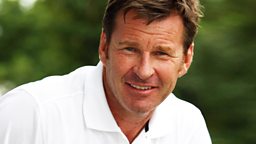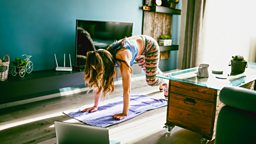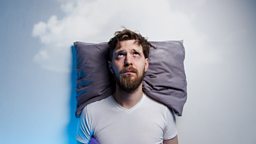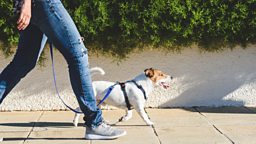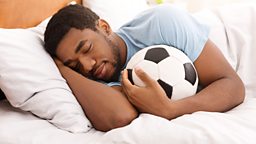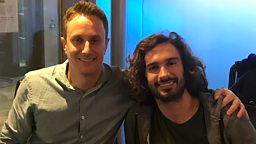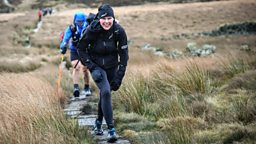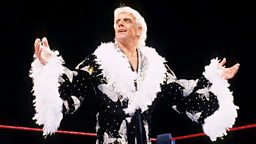How to sleep like a Premier League footballer
Want to sleep better? For an ever-increasing number of people, the answer is "yes".
There is certainly a lot of advice out there about how to achieve a good night’s rest: evict the TV from your room, source the perfect bed and power down your tech an hour or two before retiring.
But what are the sleep-hacking secrets which have helped some of the world’s top footballers? In Don’t Tell Me The Score, Simon Mundie sits down with elite sports sleep coach Nick Littlehales, whose focus is to maximise athletes' recovery by putting them in touch with the way they are designed to sleep.
Here are Nick’s tips for how to sleep like a Premier League footballer...
Nick Littehales: sleep coach
Nick has worked with some of the biggest football clubs including Sir Alex Ferguson’s Manchester United team of ’92 and Sven-Göran Eriksson’s England squad. He also advised Team Sky’s Tour de France-winning cyclists.

1. Think in cycles, not hours
Needing eight hours a night is a myth, says Nick. Our sleep follows a natural 90-minute cycle as we move between deep NREM (Non-Rapid Eye Movement) and REM sleep. The important thing, he says, is not to interrupt one of these phases, so structure your sleep in multiples of 90 minutes: this could be 7.5, 6, or 4.5 hours of shut-eye.
Nick advises sticking to a regular wake time and working backwards. So, if you plan to wake at 6.30am for example, you should plan to drift off at 5am, 3.30am, 2am, 12.30am or 11pm.
2. Think about sleep over a week, not just a night
Rather than achieving a set number of hours a night, Nick believes it’s all about getting the right amount of sleep cycles each day and week.
“What we want to achieve is 35 cycles in seven days, which is five a day,” says Nick. If you go to bed late, simply balance it with an extra cycle the following night, or try to plan in a rest earlier in the day. He says we should look at the week ahead and plan our recovery cycles according to our work and social schedules.

3. Sleep polyphasically
Nick says that up until we invented the electric light bulb we slept polyphasically, just like a baby does. “That means shorter, more often.”
The circadian process takes 24 hours and “as humans, we are totally hardwired into that process,” he says. There are certain times in the day when we are designed to rest: midday is the “second natural sleep period” and another falls between 5 and 7pm. Using these natural times of rest, as many athletes do, aids recovery.
Nick believes we can happily sleep biphasically: grabbing a shorter period at night but catching a recovery period midday; or triphasically: resting at night, midday, and then during the early evening.
4. Think “controlled recovery periods” rather than naps
Crucially, periods of rest don’t have to be sleep. Nick wants us to stop thinking in terms of naps, and start thinking about “controlled recovery periods” or CRPs.
“CRP has nothing to do with trying to go into a sleep period,” he says. It’s about allocating 30 minutes (a third of the 90-minute cycle) and “just taking time out for yourself. That means you can do it anywhere.” The sleep coach says you can use sound, meditation, mindfulness, chuck a towel over your head, go somewhere quiet, sit in a toilet, or sit in your car. Although you’re not necessarily nodding off, these CRPs do count towards your weekly sleep cycle total.
Many top football clubs recognise the importance of rest and are incorporating recovery rooms into their training grounds.

5. Have a clear post-sleep routine
It’s not the 90 minutes before you sleep that are key, says Nick, but the 90 minutes after you wake: “Get it right in the morning. Everything you do from the point of wake determines the quality of recovery.” So identify a clear post-sleep routine. This includes delayed tech start-up, hydrating, fuelling up, light exercise, and bladder and bowel movements!
6. Use a light therapy device
If you find it hard to rise, Nick advises getting a dawn wake simulator (light therapy device), which will recreate sunrise and sunset in a dark room. This light and dark will trigger the shift between your melatonin – the chill out and suppress hormone, and the serotonin – the wake, active, “unsuppress” hormone in your system.
Some businesses are getting on board: “There are companies out there who’ve got lighting systems in their buildings that follow the circadian rhythms.”
You can download a free light meter app to check out your everyday light exposure, inside and out.
7. Get a bigger bed
Altering how and where you sleep is a simple change that can make a big difference. “A superking bed is actually just two adult sleeping spaces,” says Nick, “so should be called a standard size for two adults.”
According to the sleep coach, size does matter – so go as big as your bedroom allows.
8. Sleep in the foetal position and use your nose
“The ideal sleeping position is in a foetal position on the opposite side to your dominant side,” says Nick. And ideally we would sleep without the need or want to use a pillow.
Finally, he urges us to train ourselves to “nose breathe”. According to the sleep coach, mouth breathing is one of the causes of disturbed and poor quality sleep.

More from Don’t Tell Me The Score
Are you a lark or an owl?
"Identifying your chronotype can be a real recovery game changer,” says sleep coach Nick Littlehales.
Do you like to wake up early? Do you want to get out of bed and get going?... "That’s an AMer. If you are repeatedly hitting the snooze button then you’re a PMer."
Now you know your chronotype, tailor your daily schedule to suit you: if you’re an AMer, tackle creative tasks in the morning and move the more mundane jobs into the afternoon.

